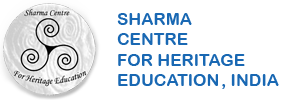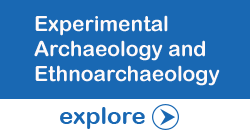Speakers:October 2020
Down Ancient Trails: About our Speakers
OCTOBER 2020 Return to home page of Down Ancient Trails Speakers: May 2020 * Speakers: June 2020 * Speakers:July 2020, Speakers: August 2020, Speakers: September 2020
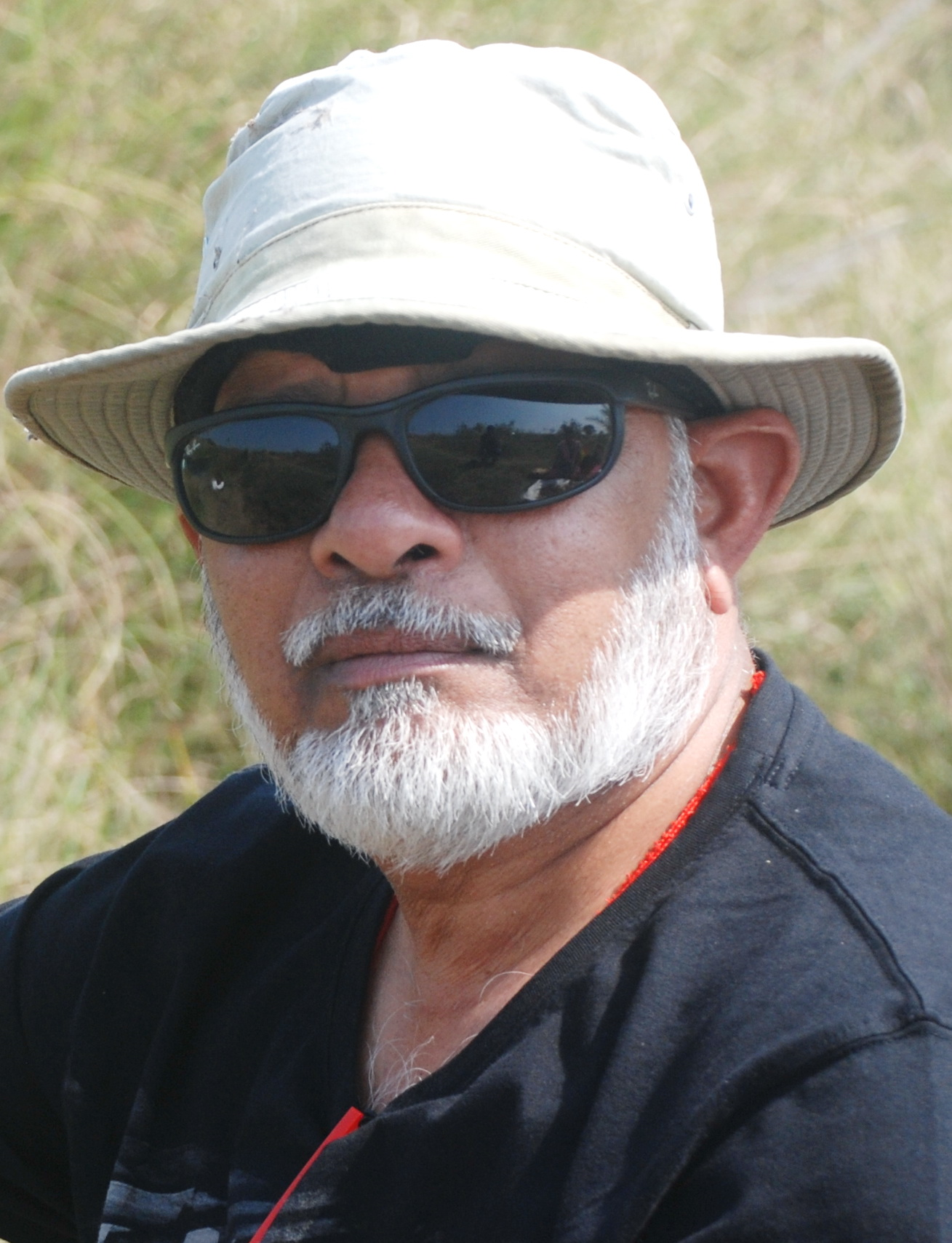 30th October, 2020. Professor Pradeep K. Behera, Post-Graduate Department of History, Sambalpur University, Burla, Odisha. Topic: Provenancing Red Ochre Milling Stone from the Late Middle Palaeolithic Context at Torajunga, Bargarh Uplands, Odisha, India: Results of Preliminary Investigation.
30th October, 2020. Professor Pradeep K. Behera, Post-Graduate Department of History, Sambalpur University, Burla, Odisha. Topic: Provenancing Red Ochre Milling Stone from the Late Middle Palaeolithic Context at Torajunga, Bargarh Uplands, Odisha, India: Results of Preliminary Investigation.
Abstract: Red ochre or hydrated iron oxide widely used by the H. sapiens since the Middle Palaeolithic/Middle Stone Age times or even earlier, is often considered as one of the most significant proxies of early/modern human behaviour, emergence of symbolic expression and advanced cognitive abilities in the prehistoric material records. In the present paper we try to explain the geo-archaeological contexts of the occurrence of red ochre milling stone with pestles, from the excavations at the Early-Late Middle Palaeolithic-Microlithic site of Torajunga, Bargarh Uplands, Odisha, and make a preliminary attempt to trace the source area of this material by using ED-XRF method. Results of our analysis clearly shows that red ochre blocks/pebbles were imported from distant sources from about 60-70 kilometers away from the open-air site of Torajunga for manufacturing ochre powders, purpose of which is still little understood. However, available ethnographic and archaeological sources have been followed to deduce possible use of this material at the site.
About: Dr. Pradeep K. Behera, Associate Professor, Post-Graduate Department of History, Sambalpur, University, Odisha, India. His postgraduate and Ph.D is from the Department of Ancient Indian History, Culture & Archaeology, Banaras Hindu University, Varanasi, India. His fields of specialization are in the fields of prehistoric & protohistoric archaeology, rock art, geoarchaeology, experimental archaeology, theoretical and field archaeology, lithic technology, sampling techniques, quantitative techniques and computer applications in archaeology. He has directed archaeological exploration/excavations at 64 Prehistoric and 32 Protohistoric/Early Historic sites in the Middle Mahanadi Valley region of western Odisha, with licenses from the Archaeological Survey of India. He has explored several sites belonging to the Palaeolithic, Microlithic, Neolithic, Chalcolithic and Early Historic periods in the Upper Brahmani & the Middle Mahanadi River Valleys of Odisha. He has research collaborations with Institute of Physics, Bhubaneswar; Birbal Sahani Institute of Palaeosciences, Lucknow; Geological Survey of India, Kolkata; UGC-DAE Consortium for Scientific Research, Kolkata; Physical Research laboratory, Ahmadabad, Gujarat, India; Institute of Physics, Bhubaneswar. He has guided 33 M.Phil and 4 Ph.D scholars. He has published 50 national and international research papers. His research projects include an ongoing project on: Archaeology of the Middle Mahanadi Valley Region, Odisha and Bargarh upland Western Odisha. He is project coordinator of (2004-2013): Manuscript Conservation Centre, P.G. Dept. of History, Sambalpur University, funded by Ministry of Culture, Govt. of India, and has a Major Research Project (ongoing): Indian Council of Historical Research, New Delhi.
PAST LECTURES
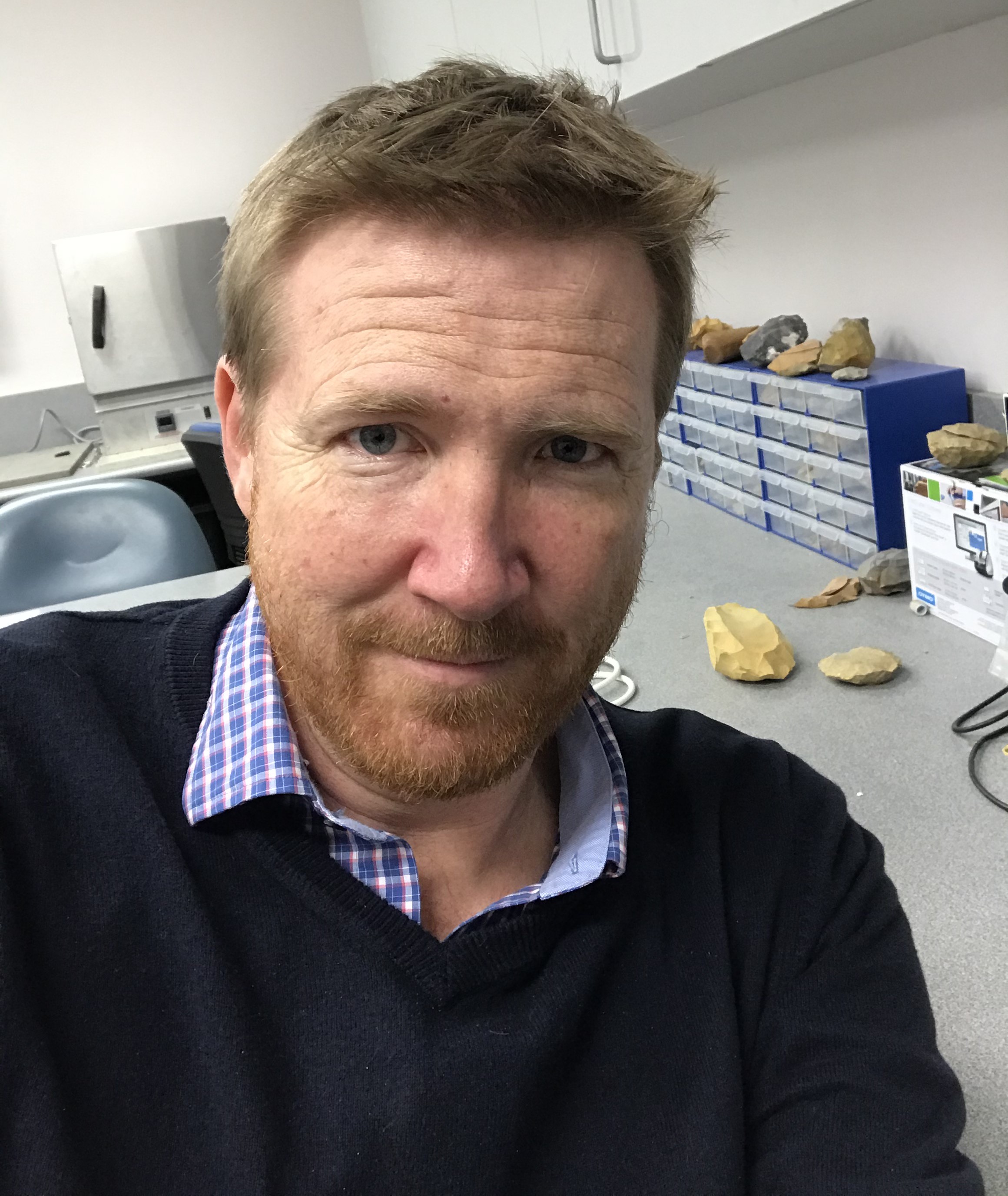 22nd October, 11.30 am (IST). Professor Chris Clarkson, Professor of archaeology and Australian Research Council Future Fellow in the School of Social Science, University of Queensland, Brisbane, Australia. Topic: The Implications of New Discoveries in Southeast Asia and Sahul for the Out of Africa Story.
22nd October, 11.30 am (IST). Professor Chris Clarkson, Professor of archaeology and Australian Research Council Future Fellow in the School of Social Science, University of Queensland, Brisbane, Australia. Topic: The Implications of New Discoveries in Southeast Asia and Sahul for the Out of Africa Story.
Abstract: The recent finding of human occupation in northern Australia by 65 ± 6 thousand years ago at the site of Madjedbebe necessitates a fresh look at current ideas about modern human dispersals out of Africa. This includes the archaeological signature of dispersal, the question of behavioural complexity and flexibility, and the apparent complex distribution of modern humans and archaic hominin species, and their hybrid forms, across Eurasia, Southeast Asia and Sahul during MIS 5-3. The new finds at Madjedbebe indicate modern humans had reached Southeast Asia and Sahul by at least 65 ka, bringing a diverse and highly adaptive economy and technology with identifiable roots in the Middle Stone Age of Africa. This colonising technology underwent bottlenecks and incorporated new innovations as populations spread east, made frequent water crossings and entered new and unfamiliar habitats. The Sahul evidence indicates that the first colonists made use of prepared centripetal core technology, multicomponent hafted technologies such as the oldest known edge ground axes in the world, invasively flaked stone points, and a broad diet including use of some of the earliest known plant processing technologies outside of Africa. Evidence now also exists for the production of figurative art, burial of the dead, and personal adornment among the first colonists to reach Southeast Asia and Sahul. This record indicates that innovation and behavioural flexibility were key characteristics of early modern human groups in the region. The important implications of new finds across Southeast Asia and Sahul are explored here in terms of genetics, fossil evidence, early modern human technology and economy, behavioural adaptation to new regions, and more esoteric phenomena such as symbolic expression.
About: Chris Clarkson is a Professor of archaeology and Australian Research Council Future Fellow in the School of Social Science, University of Queensland, Brisbane, Australia. He undertook his PhD in lithic technology and landscape use at the Australian National University, Canberra, under Professor Peter Hiscock. His postdoctoral work at the University of Cambridge resulted in close collaborations with Professor Ravi Korisettar and Professor Jagnath Pal with excavations in Andhra Pradesh and Madhya Pradesh. He then returned to Australia and has worked on Middle Palaeolithic assemblages from Africa, India, Arabia, the Levant, and France, as well as early sites in Southeast Asia and Australia.
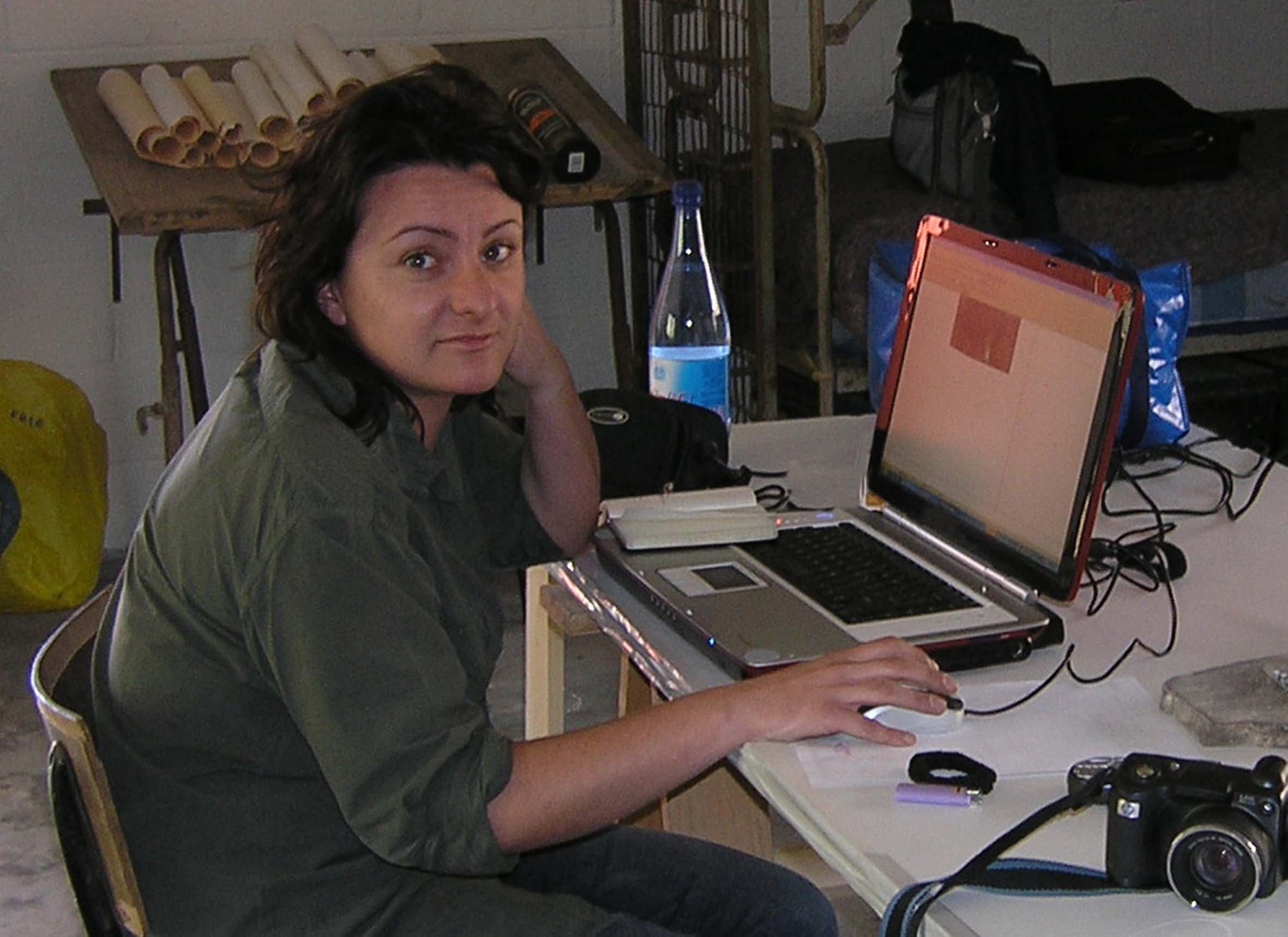 19th October, 2020. Professor Rosalia Gallotti, Université Paul-Valéry Montpellier 3, CNRS, UMR 510 ASM, Campus St Charles, MONTPELLIER (FR) Topic: African Acheuleans: techno-economic behaviors in East Africa and Maghreb during the Early and early Middle Pleistocene
19th October, 2020. Professor Rosalia Gallotti, Université Paul-Valéry Montpellier 3, CNRS, UMR 510 ASM, Campus St Charles, MONTPELLIER (FR) Topic: African Acheuleans: techno-economic behaviors in East Africa and Maghreb during the Early and early Middle Pleistocene
Abstract: In the last two decades, archaeological research overarching aims in Africa included the refinement of the chronostratigraphic framework in which Acheulean emerges and develops, new systematic excavations, the investigation of the ecological adaptations of the Acheulean hominins, and their technological behaviors. Although results do not speak in one voice, the recent technological studies shed new light on the Oldowan-Acheulean transition, rekindled the debate about the existence of a Developed Oldowan, criticized the paradigm that Acheulean is a uniform cultural entity and the exclusive cultural product of Homo erectus sensu lato. In the lecture I report the Acheulean lithic productions in East Africa and Maghreb during the Early and early Middle Pleistocene, evaluating the techno-economic similarities and differences among productions in specific micro-regional and environmental contexts. My analysis mainly focus on the raw material-related human behaviors in order to understand if the technical variability reveal occasional choices, i.e. the outcome of the human adaptation to different situations, or it reveal an invariant knowledge, free from the several constraints imposed by the raw materials. Results on the timing, convergence, and diffusion of technical concepts, practices, and innovations allow us to assess the existence of several African Acheuleans.
References
Gallotti, R., Mohib, A., Fernandes, P., El Graoui, M., Lefèvre, D., Raynal, J.-P, 2020. Dedicated core-on-anvil production of bladelet-like flakes in the Acheulean at Thomas Quarry I - L1 (Casablanca, Morocco). Scientific Reports. 10, 9225. https://doi.org/10.1038/s41598-020-65903-3.
Mohib, A., Raynal, J.-P., Gallotti, R., Daujeard, C., El Graoui, M., Fernandes, P., Geraads, D., Magoga, L., Rué, M., Sbihi-Alaoui, F.-Z., Lefèvre, D., 2019. Forty years of research at Casablanca (Morocco): new insights in the Early/Middle Pleistocene archaeology and geology. Hespéris Tamuda LIV, 25-56.
Gallotti, R., Mussi, M. (Eds), 2018. The Emergence of the Acheulean in East Africa. Springer, Cham, 242 p.
de la Torre, I., McHenry, L., Njau, J. (Eds), 2018. From the Oldowan to the Acheulean at Olduvai Gorge (Tanzania) [Whole issue]. Journal of Human Evolution, 120.
Gallotti, R., Mussi, M., 2017. Two Acheuleans, two humankinds: From 1.5 to 0.85 Ma at Melka Kunture (Upper Awash, Ethiopian highlands). Journal of Anthropological Sciences 95, 137-181.
Torre de la, I., 2016. The origins of the Acheulean: Past and present perspectives on a major transition in human evolution. Philos. Trans. R. Soc. Lond. B Biol. Sci. 371, 20150245.
Beyene, Y., Asfaw, B., Katsuhiro, S., Suwa, G. (Eds), 2015. Konso-Gardula Research Project, Vol. 2. Archaeological Collections: Background and the Early Acheulean Assemblages. Tokyo: The University Museum, The University of Tokyo.
Diez-Martín, F., Sánchez Yustos, P., Uribelarrea, D., Baquedano, E., Mark, D.F., Mabulla, A., Fraile, C., Duque, J., Diáz, I., Pérez-González, A., Yravedra, J., Egeland, C.P.,Organista, E., Domínguez-Rodrigo, M., 2015. The Origin of the Acheulean: The 1.7 Million-Year-Old Site of FLK West, Olduvai Gorge (Tanzania). Scientific Reports, 5, 17839.
Lepre C.J., Roche H., Kent D.V., Harmand S., Quinn R.L., Brugal J.-P., Texier P.-J., Lenoble A. & Feibel C.S. 2011. An earlier origin for the Acheulan. Nature, 477: 82-85.
Sharon, G. Large flake Acheulean. Quaternary International 223–224, 226–233 (2010).
About: Rosalia Gallotti is a researcher at Université Paul-Valéry Montpellier 3 in France. She is a Palaeolithic archeologist with 15-years experience on the research related to human technical productions and settlement dynamics in the Early-Middle Pleistocene. Her primary interests are the origin and evolution of the earliest hominin technologies and she is currently involved in field projects in Ethiopia, Morocco, France, and Italy.
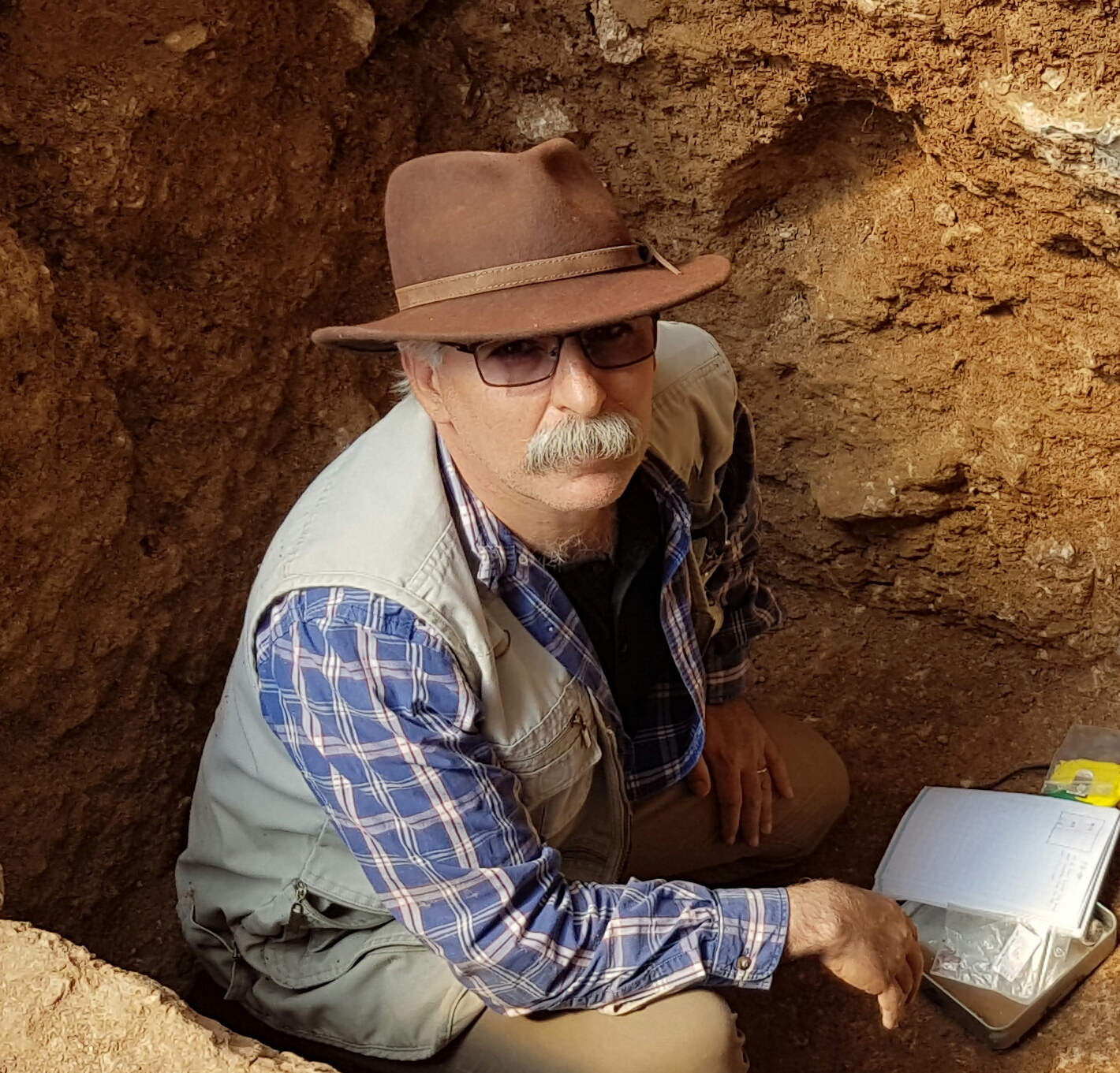 16th October, 2020, 6.30 pm (IST) : Dr. Saman Heydari-Guran, Stiftung Neanderthal Museum, Talstr. 300, 40822 Mettmann, Germany & Diyarmehr Institute for Palaeolithic Studies. Topic: Human evolution in the Zagros Mountains
16th October, 2020, 6.30 pm (IST) : Dr. Saman Heydari-Guran, Stiftung Neanderthal Museum, Talstr. 300, 40822 Mettmann, Germany & Diyarmehr Institute for Palaeolithic Studies. Topic: Human evolution in the Zagros Mountains
Abstract: In the past four decades, a topic of major interest amongst archaeologists and palaeoanthropologists has been the Eurasian Middle-Upper Palaeolithic transition. Recently, great progress was made in several domains, particularly Palaeogenetics, which have revealed the complex ancestry of early Eurasians. One key region for this is the Iranian Plateau, which has not been subject to intensive research. The Kermanshah Region (on the West of the Plateau), the interest area for this research, has been recognized as one of the gates into the Iranian Plateau since it is located between the Mesopotamian lowland on the west and the high plateau where many intermountain valleys have provided easy communication routes to the eastern regions. Despite this important strategically position in the West Central Zagros, our knowledge of Palaeolithic occupation there and even in Iran is suffering from the lack of a clear, up-to-date and scientific work on stratigraphy, settlement systems and accurate absolute dating. To overcome some of these problems, after the lack of serious Paleolithic research for many years, the author and his colleagues have recently conducted a Palaeolithic research project entitled " Human evolution in the Zagros Mountains" including surveys and excavations in the Kermanshah Region within the Zagros Mountains. In this talk I will present a part of our results.
About: He was born in 1970, Kermanshah, Iran. - Since November 2019 director of the DFG-funded project "Last Neanderthals and Early Homo sapiens Settlement in Bawa Yawan Rockshelter, Kermanshah, West-Central Zagros Mountains (Iran).- 1992-1996 Study Geography, Kermanshah, Iran (B.A.). 1997-2001 Study of Geomorphology, University of Esfahan, Iran. -2002-2004 Researcher fellow at the Center for Palaeolithic Research, National Museum of Iran. -2004 PhD conditae in the Department of Prehistory, University of Tübingen, about the Paleolithic landscapes of Iran.- 2010-2014 postdoc at the Department of Prehistory, University of Tübingen. -2016-2018 Postdoc at the Leverhulme Center for Human Evolutionary Studies, Department of Archaeology, University of Cambridge, UK.
9th October, 2020, 6.30 pm (IST) : Professor Maria Martinon-Torres, Director, CENIEH, Centro Nacional de Investigación sobre la Evolución Humana, Burgos, Spain. Topic: The Atapuerca sites. Over one million years of hominin evolution in Europe
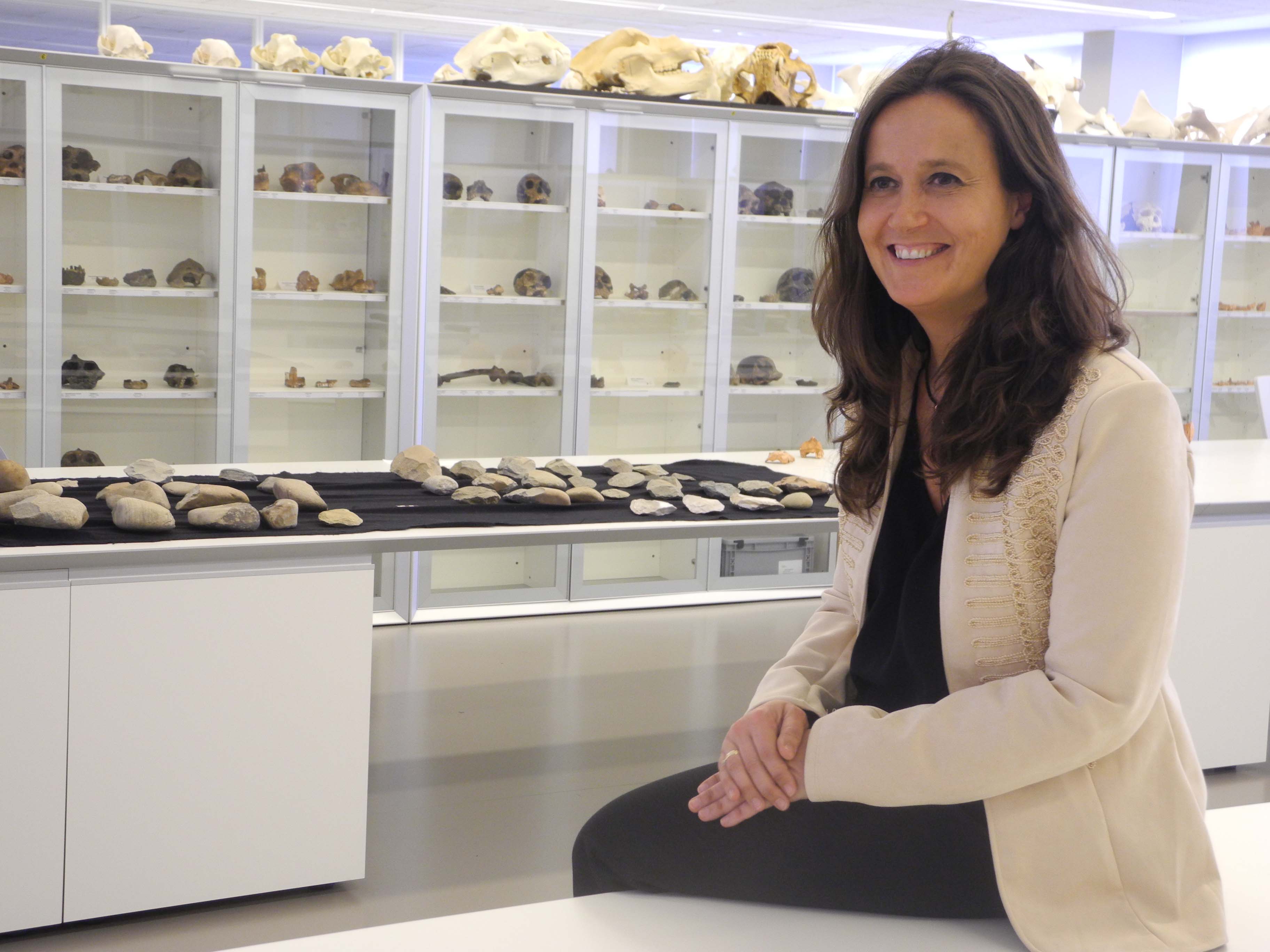 About: María Martinón-Torres is Director of CENIEH (National Research Center on Human Evolution), PhD in Medicine and Surgery (University of Santiago de Compostela, Spain) with Extraordinary Award, MPhil in Human Origins (University of Bristol) and Forensic Anthropology (Universidad Complutense de Madrid). Honorary Professor in the Anthropology Department of University College London where she was Lecturer and Reader from 2015 to 2017. Corresponding member by invitation of the Royal Academy of Medicine and Surgery of Galicia (Spain) and founding member of the European Society for the Study of Human Evolution (ESHE). She specialized in Human Evolution by the University of Bristol (UK) and in Forensic Anthropology by the Universidad Complutense de Madrid. Member of the Atapuerca Research Team since 1998 and Research Leader of the Dental Anthropology Group from 2007 to 2015 at CENIEH. She has research interest in the palaeobiology, taxonomy and phylogeny of the genus Homo, palaeopathology and the evolutionary scenario of the first Europeans. She has leaded and participated in several international projects such the Expert Interchange Program on archaeology and palaeoanthropology between Spain and the Republic of Georgia funded by the Spanish Agency for International Cooperation (AECID) that led to the study of the original hominin fossil from Dmanisi or the research projects funded the Chinese Academy of Science and the British Academy for the study of the hominin fossils in collaboration with the Institute of Vertebrate Paleontology and Palaeoanthropology (IVPP) of Beijing. She has published more than 90 books, book chapters or scientific articles in SCI journals such as Nature, Science, PNAS or Journal of Human Evolution. Her work has been highlighted as Top 1% of most cited authors in Social Sciences according to Thomson Reuters Essential Science Indicators. Her research has received funding from several institutions such as the British Council, the British Academy, Fundación Pedro Barrié de la Maza, Fundación Atapuerca, Fundación Duques de Soria or the Royal Society of London. The science outreach book, “Hijos de un tiempo perdido” she was co-author of received the Prism of Science Award. She has given more than 70 conferences by invitation in several seminars and courses such the Instituto Cervantes of Brazil and Tokyo, the American Association for the Advancement of Science of Chicago, the Academy of Science of San Francisco, or the Tel-Aviv University (Israel), among others. The Royal Anthropological Institute has decided to confer upon her its 2019 Rivers Memorial Medal in recognition of the excellence of her recent contribution to the anthropological field.
About: María Martinón-Torres is Director of CENIEH (National Research Center on Human Evolution), PhD in Medicine and Surgery (University of Santiago de Compostela, Spain) with Extraordinary Award, MPhil in Human Origins (University of Bristol) and Forensic Anthropology (Universidad Complutense de Madrid). Honorary Professor in the Anthropology Department of University College London where she was Lecturer and Reader from 2015 to 2017. Corresponding member by invitation of the Royal Academy of Medicine and Surgery of Galicia (Spain) and founding member of the European Society for the Study of Human Evolution (ESHE). She specialized in Human Evolution by the University of Bristol (UK) and in Forensic Anthropology by the Universidad Complutense de Madrid. Member of the Atapuerca Research Team since 1998 and Research Leader of the Dental Anthropology Group from 2007 to 2015 at CENIEH. She has research interest in the palaeobiology, taxonomy and phylogeny of the genus Homo, palaeopathology and the evolutionary scenario of the first Europeans. She has leaded and participated in several international projects such the Expert Interchange Program on archaeology and palaeoanthropology between Spain and the Republic of Georgia funded by the Spanish Agency for International Cooperation (AECID) that led to the study of the original hominin fossil from Dmanisi or the research projects funded the Chinese Academy of Science and the British Academy for the study of the hominin fossils in collaboration with the Institute of Vertebrate Paleontology and Palaeoanthropology (IVPP) of Beijing. She has published more than 90 books, book chapters or scientific articles in SCI journals such as Nature, Science, PNAS or Journal of Human Evolution. Her work has been highlighted as Top 1% of most cited authors in Social Sciences according to Thomson Reuters Essential Science Indicators. Her research has received funding from several institutions such as the British Council, the British Academy, Fundación Pedro Barrié de la Maza, Fundación Atapuerca, Fundación Duques de Soria or the Royal Society of London. The science outreach book, “Hijos de un tiempo perdido” she was co-author of received the Prism of Science Award. She has given more than 70 conferences by invitation in several seminars and courses such the Instituto Cervantes of Brazil and Tokyo, the American Association for the Advancement of Science of Chicago, the Academy of Science of San Francisco, or the Tel-Aviv University (Israel), among others. The Royal Anthropological Institute has decided to confer upon her its 2019 Rivers Memorial Medal in recognition of the excellence of her recent contribution to the anthropological field.
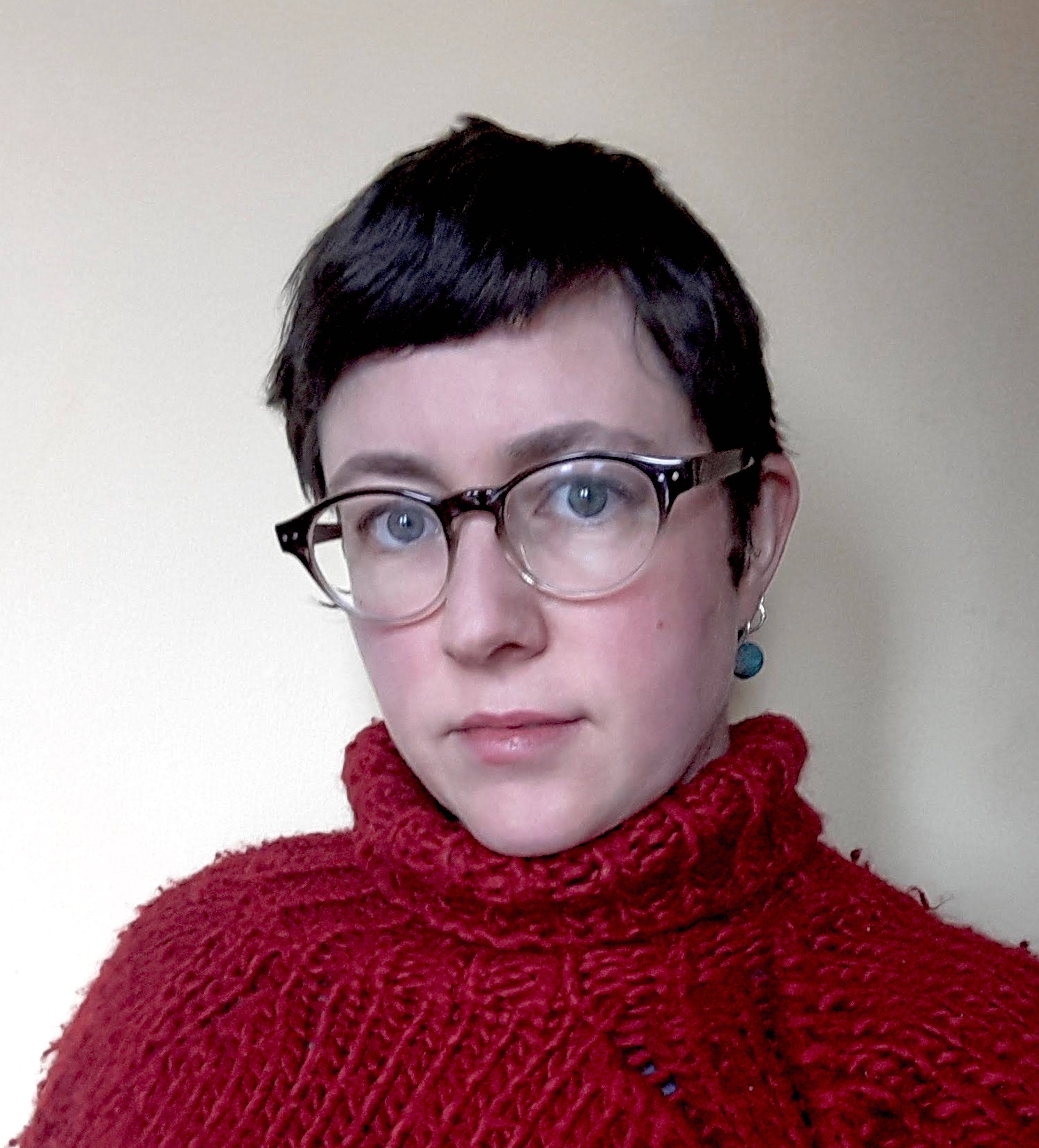 6th October, 2020, 6.30 pm (IST): Dr. Rebecca Wragg Sykes, Honorary Fellow in Archaeology at the University of Liverpool and Honorary Researcher at PACEA UMR-5199, Université de Bordeaux. Topic: Full Spectrum Neanderthals
6th October, 2020, 6.30 pm (IST): Dr. Rebecca Wragg Sykes, Honorary Fellow in Archaeology at the University of Liverpool and Honorary Researcher at PACEA UMR-5199, Université de Bordeaux. Topic: Full Spectrum Neanderthals
Abstract: The past three decades has seen an explosion of information about Neanderthals, stemming from ever-more ingenious archaeological methods and techniques. Today research in this field is a truly multidisciplinary endeavour, and to produce a definitive account of their behaviour requires a synthetic perspective. By following different channels and flows of evidence – from lithic technology to subsistence to other material engagements – and examining confluences between them, it is possible to outline how the Neanderthal world was rooted in notions of efficiency and quality, alongside creativity and aesthetic explorations. 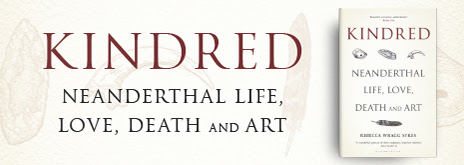
About: Dr Rebecca Wragg Sykes is an Honorary Fellow in Archaeology at the University of Liverpool and Honorary Researcher at PACEA UMR-5199, Université de Bordeaux. Her academic career includes a doctoral synthesis of the late Neanderthals of Britain, and a Marie Curie Intra-European postdoctoral Fellowship working on prehistoric lithic sourcing in the Massif Central mountains of France. She is a co-founder of TrowelBlazers, and her first book Kindred: Neanderthal Life, Love Death and Art was published by Bloomsbury in August 2020.
